Fortinet NSE8_812 - Network Security Expert 8 Written Exam
A FortiGate deployment contains the following configuration:
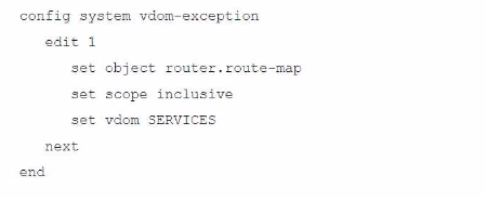
What is the result of this configuration?
SD-WAN is configured on a FortiGate. You notice that when one of the internet links has high latency the time to resolve names using DNS from FortiGate is very high.
You must ensure that the FortiGate DNS resolution times are as low as possible with the least amount of work.
What should you configure?
Refer to the exhibit containing the configuration snippets from the FortiGate. Customer requirements:
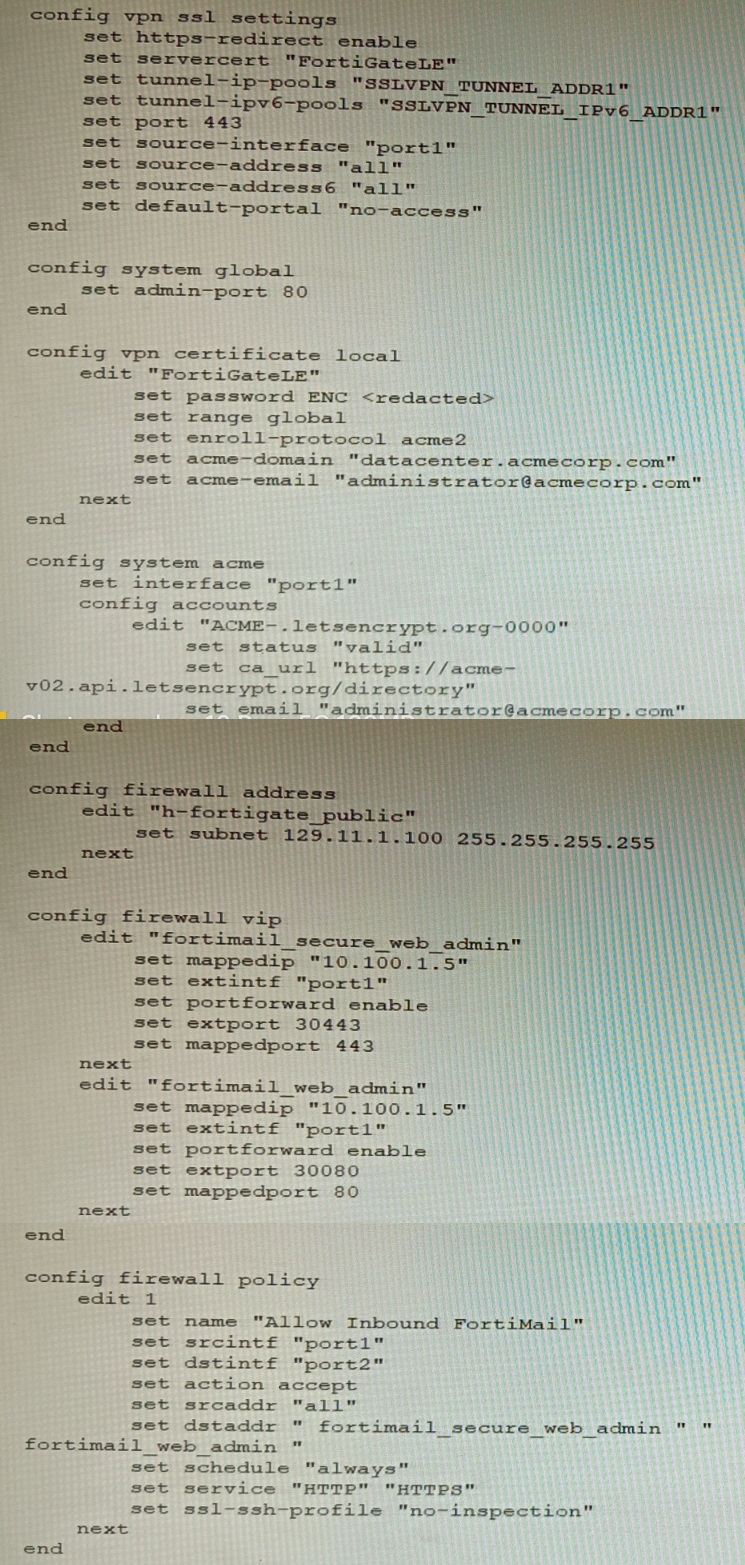
• SSLVPN Portal must be accessible on standard HTTPS port (TCP/443)
• Public IP address (129.11.1.100) is assigned to portl
• Datacenter.acmecorp.com resolves to the public IP address assigned to portl
The customer has a Let's Encrypt certificate that is going to expire soon and it reports that subsequent attempts to renew that certificate are failing.
Reviewing the requirement and the exhibit, which configuration change below will resolve this issue?
A)

B)

C)

D)

A customer has FortiAP devices in three branch offices managed from a FortiGate in the HQ. Each FortiAP is connected to a dedicated management VLAN.
The customer wants the users connected to the FortiAP SSIDs to use the branch local internet connection, but each branch uses a different VLAN ID for the bridge. HQ users travel to different branches and connect to the same SSID.
Which configuration option will solve this requirement?
Refer to The exhibit, which shows a topology diagram.
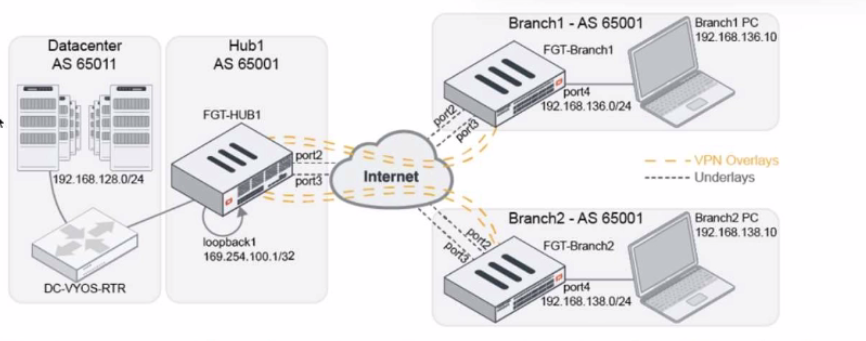
A customer wants to use SD-WAN for traffic generated from the data center towards Branches. SD-WAN on HUB should follow the underlay condition on each Branch and the solution should be scalable for hundreds of Branches.
Which SD WAN-Rules strategy should be used?
A customer is planning on moving their secondary data center to a cloud-based laaS. They want to place all the Oracle-based systems Oracle Cloud, while the other systems will be on Microsoft Azure with ExpressRoute service to their main data center.
They have about 200 branches with two internet services as their only WAN connections. As a security consultant you are asked to design an architecture using Fortinet products with security, redundancy and performance as a priority.
Which two design options are true based on these requirements? (Choose two.)
Refer to the exhibits, which show a topology and diagnostic commands.
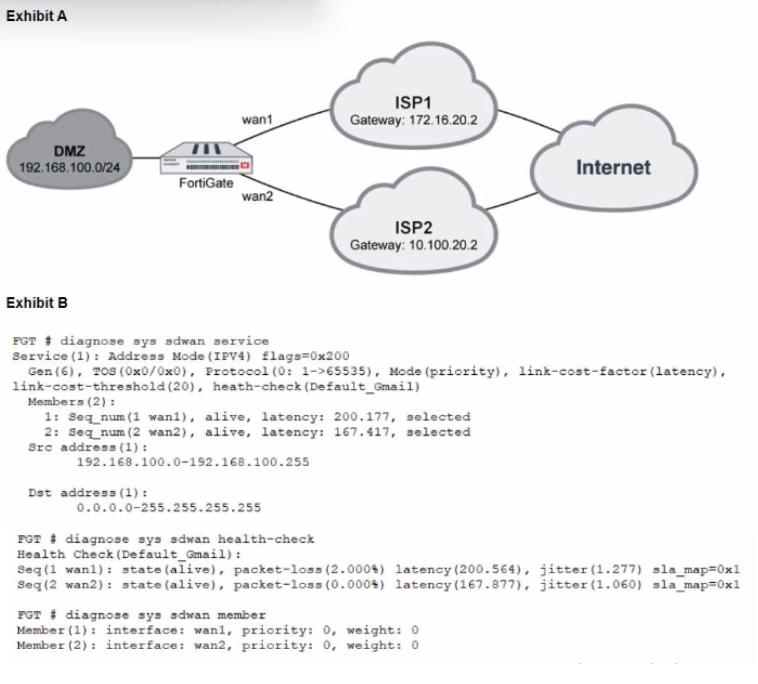
Which two statements about the path resolution are true? (Choose two.)
An administrator has configured a FortiGate device to authenticate SSL VPN users using digital certificates. A FortiAuthenticator is the certificate authority (CA) and the Online Certificate Status Protocol (OCSP) server.
Part of the FortiGate configuration is shown below:
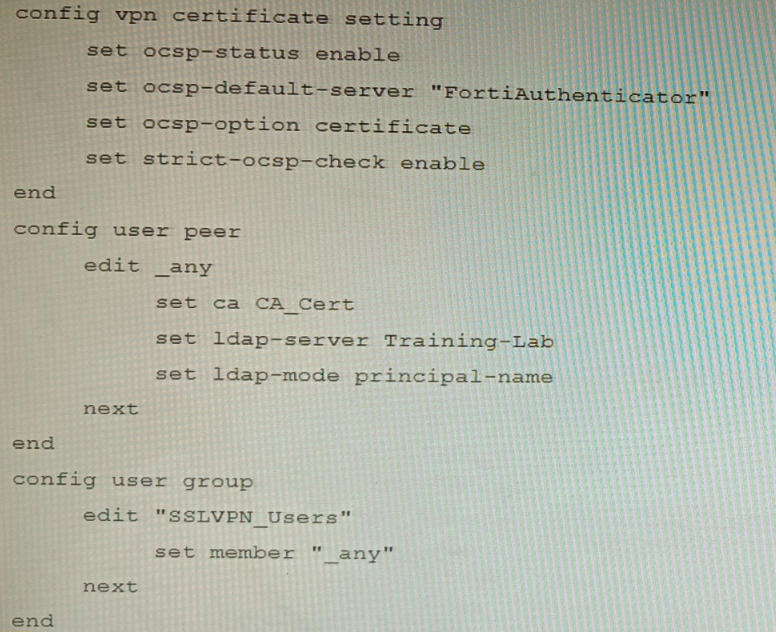
Based on this configuration, which two statements are true? (Choose two.)
A retail customer with a FortiADC HA cluster load balancing five webservers in L7 Full NAT mode is receiving reports of users not able to access their website during a sale event. But for clients that were able to connect, the website works fine.
CPU usage on the FortiADC and the web servers is low, application and database servers are still able to handle more traffic, and the bandwidth utilization is under 30%.
Which two options can resolve this situation? (Choose two.)
Refer to the exhibits.
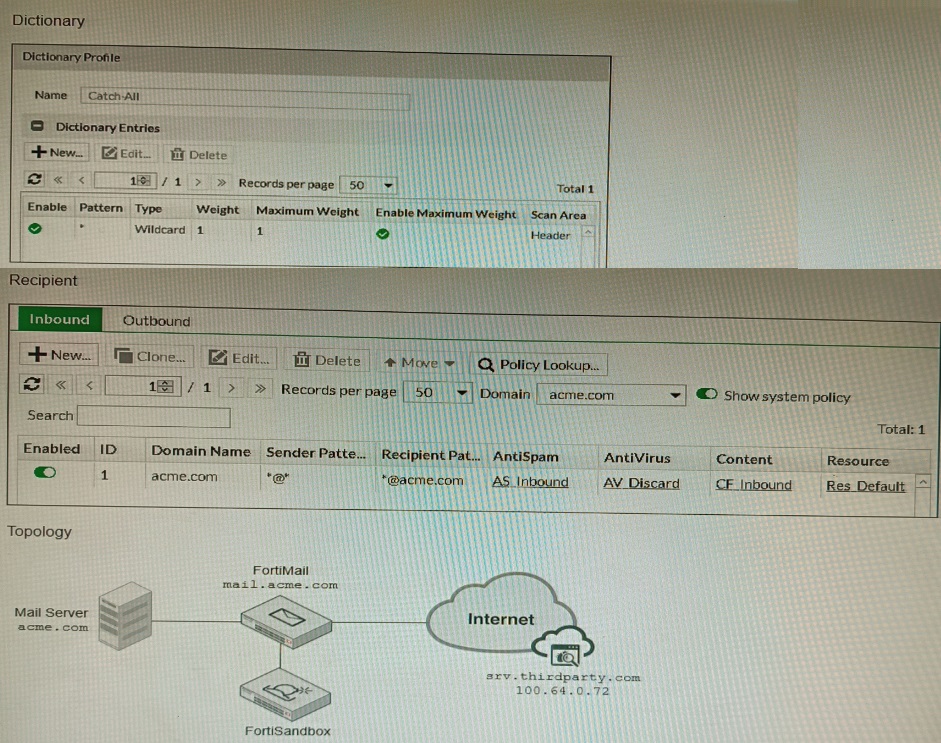
The exhibits show a FortiMail network topology, Inbound configuration settings, and a Dictionary Profile.
You are required to integrate a third-party's host service (srv.thirdparty.com) into the e-mail processing path.
All inbound e-mails must be processed by FortiMail antispam and antivirus with FortiSandbox integration. If the email is clean, FortiMail must forward it to the third-party service, which will send the email back to FortiMail for final delivery, FortiMail must not scan the e-mail again.
Which three configuration tasks must be performed to meet these requirements? (Choose three.)



